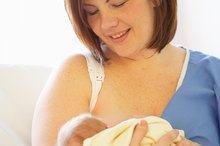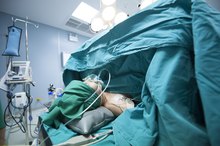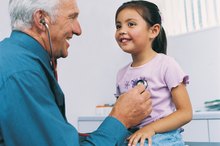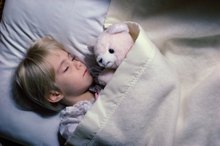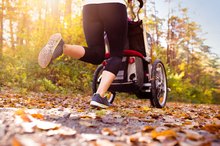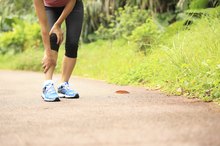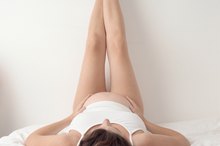Breastfeeding & Leg Pains
Mothers might expect to feel soreness or pain in the nipples and breasts during the first days of breastfeeding; however, pains in the legs while nursing might come as a surprise. Lingering effects from pregnancy and labor, posture while nursing and lack of sleep can result in leg pains while breastfeeding. Most cases of leg pains while breastfeeding are preventable and treatable by changing nursing positions and taking pain relievers.
If you are experiencing serious medical symptoms, seek emergency treatment immediately.
Symptoms
Pains in your legs while you breastfeed might feel like a pins-and-needles or tingling sensation or a strong, spasmodic pain. Leg pains might occur only when you breastfeed using certain positions or every time you nurse your baby. Your leg pain might persist during other activities and even could occur when you try to sleep.
Causes
Heartburn and Breastfeeding
Learn More
Extra weight gain during pregnancy can cause you to experience postpartum leg pain when you breastfeed, explains the BabyCenter website 1. Hormonal changes after delivery can relax your ligaments and joints, leading to pain in your lower body. Intravenous fluids administered during your labor and delivery can lead to swelling in your legs, which can cause pain while you sit for long stretches nursing your baby. Exhaustion from caring for your new baby and lack of sleep can also cause your legs to hurt while you breastfeed. Rarely, a blood clot or infection in your leg can cause leg pain while you nurse.
- Extra weight gain during pregnancy can cause you to experience postpartum leg pain when you breastfeed, explains the BabyCenter website 1.
- Intravenous fluids administered during your labor and delivery can lead to swelling in your legs, which can cause pain while you sit for long stretches nursing your baby.
Treatments
Adjust your posture and position when breastfeeding to alleviate pressure and improve circulation in your legs. Another nursing position to try is lying on one of your sides in bed with your baby’s belly against your belly and a small pillow between your bent knees for comfort. If you get a pins-and-needles sensation in your legs while breastfeeding, stand or walk for a few minutes to restore circulation. For painful spasms in your legs, take ibuprofen or acetaminophen as recommended by your doctor. If your leg pains are severe or worsen, or if you notice swelling, redness or a lump in your leg, seek urgent medical treatment, as this could indicate a life-threatening condition like a blood clot.
- Adjust your posture and position when breastfeeding to alleviate pressure and improve circulation in your legs.
- If you get a pins-and-needles sensation in your legs while breastfeeding, stand or walk for a few minutes to restore circulation.
Prevention
Causes of Pain in the Leg After a C-Section
Learn More
Consider using a glider with an ottoman to put your legs up while you nurse your baby, or situate yourself on the couch with your legs stretched out and use pillows to support your baby, as these positions can take some pressure off your legs and allow you to relax while you breastfeed. Avoiding sitting with your legs folded or crossed can also help prevent leg pains while you nurse. Sitting up straight and using good posture when you stand and walk can help prevent leg pains when breastfeeding.
- Consider using a glider with an ottoman to put your legs up while you nurse your baby, or situate yourself on the couch with your legs stretched out and use pillows to support your baby, as these positions can take some pressure off your legs and allow you to relax while you breastfeed.
- Avoiding sitting with your legs folded or crossed can also help prevent leg pains while you nurse.
Related Articles
References
Resources
Writer Bio
Jessica Lietz has been writing about health-related topics since 2009. She has several years of experience in genetics research, survey design, analysis and epidemiology, working on both infectious and chronic diseases. Lietz holds a Master of Public Health in epidemiology from The Ohio State University.
